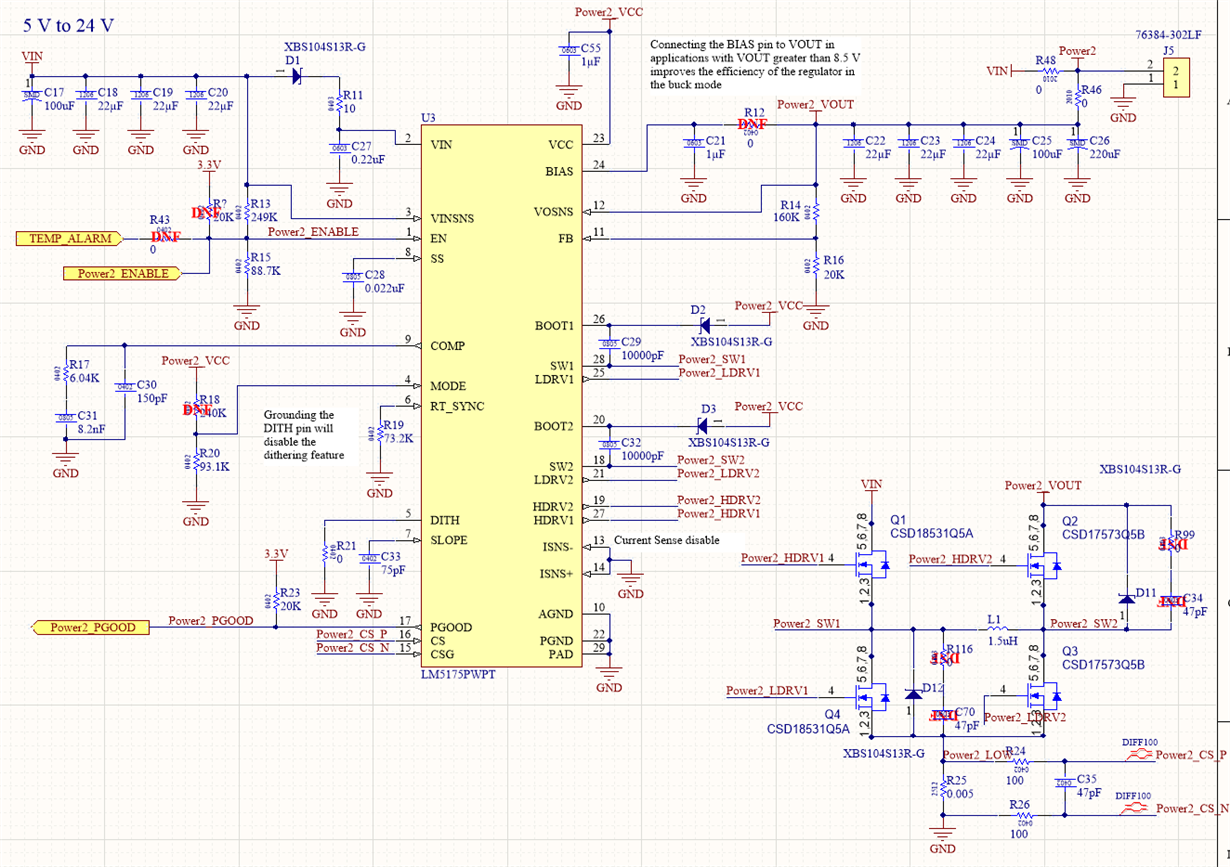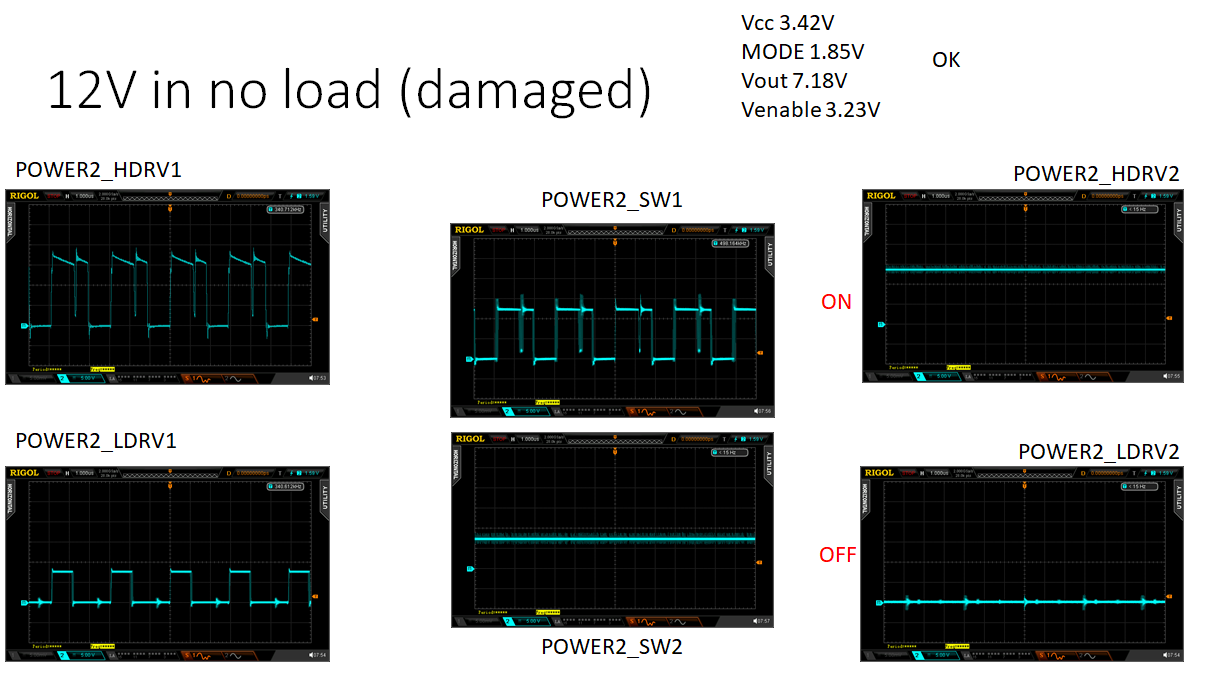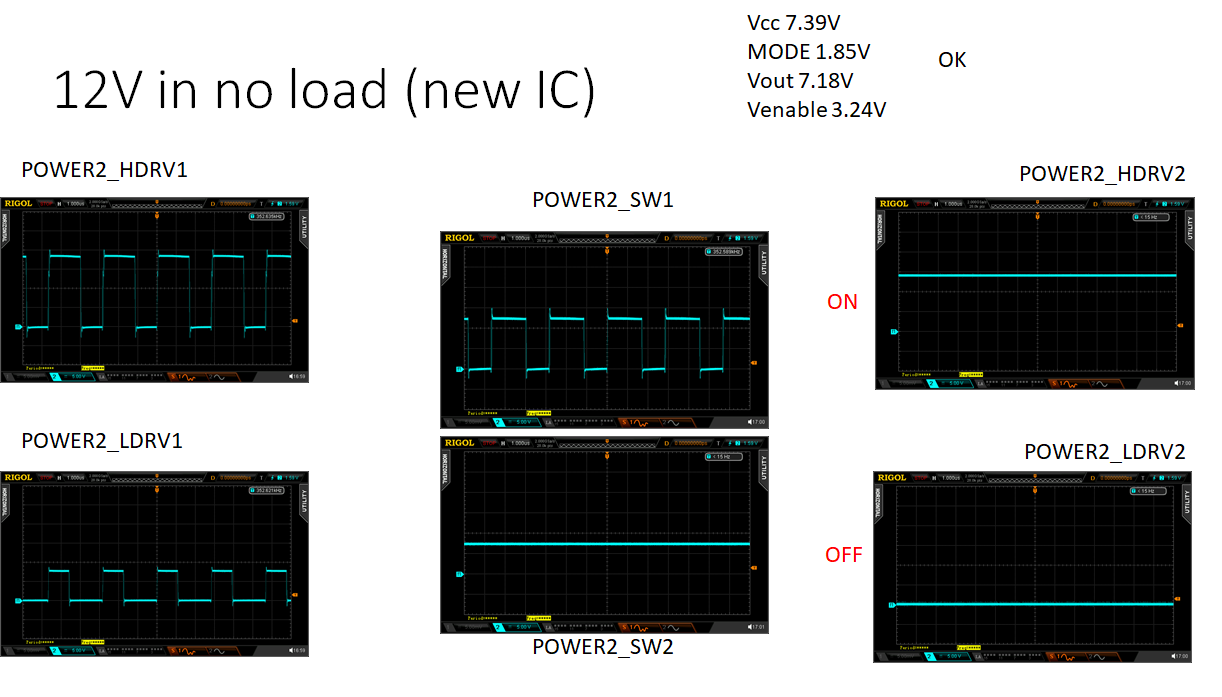Hello,
We designed a buck/boost DC-DC based on the LM5175. The input is 5V to 24V with an output of 7.2V and 10A.
Sometimes after a unexpected load, the VCC pin get 3.4V and the IC stop working once a small load is applied (~0.2A).
Some values during normal operation:
- Vcc 7.32V
- MODE 1.85V
- Vout 7.18V
- Venable 3.23V
Once the IC stop working, the new values are:
- Vcc 3.4V
- MODE 1.85V
- Vout 7.18V
- Venable 3.23V
I'm not sure what is causing the unexpected load in the circuit, neither why the IC could be damaged once a high load is present (if this is the cause).
Another situation we found during testing, was an audible sound when the power input is decreased (voltage and current). We follow suggestion about finding the source with a pencil, but was very hard to located. The level sound increase when the input power is reduced (voltage or current).
Any advice pointing to a solution is appreciated.
We are going to manufacture a second revision and would like to include any improvement to avoid these situations.
Thanks
Hu Lao







